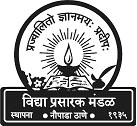The
Battle Against Noise
Dominique
Habault, director of the Transport Noise Research Network.
© A. Rimeymeille/LMA
Noise pollution is by no means a recent issue, nor the toxic by-product
of industrialization. Regulations to curb noise go as far back as Ancient
Rome and have continued through the Middle Ages until today. Yet day
and night, whether we're at work, at play, or at home, noise in all
its forms still relentlessly invades our lives. One of the most frequent
examples given is transportation noise. The more people travel, the
greater the areas affected by noise.
The impact
of noise pollution is manifold: it affects hearing, performance (attention
and concentration), sleep, and health. These effects are all the more
dangerous because people subjected to noise are often unaware of its
action. The study of noise and its many dimensions is therefore of vital
importance for our society.
In order
to reduce noise levels emitted by a source, there are two well-known
solutions: passive control, which consists in isolating the source with
the help of sound-absorbing materials, and active control, where additional
sound sources are used to “cancel out” the effects of the so-called
primary source. Although both solutions work well, they cannot be applied
to every situation.
For most
noise problems, the issue is far more complex. The mechanisms at work
that can cause noise need to be clearly identified, understood, and
modeled. In the battle against noise, computer modeling has an important
role to play. It makes it possible to identify the sources of noise,
model their behavior, predict the way in which the sound carries, and
test solutions to reduce noise. When a new product is designed, whether
it be a vehicle, a tool, or a household appliance, simulations like
these help find ways of reducing noise in early stages of the manufacturing
process, sometimes even before a prototype is made.
There are
many areas of research specifically dedicated to fighting noise pollution.
One such field of study is the characterization and development of sound-absorbing
or damping materials. Another pertains to complex situations like multisource
(planes, trains, cars, etc.) and multisensory (noise and light, noise
and vibrations, etc.) exposure. This type of research frequently needs
to include other aspects associated with noise such as mechanical and
safety factors. But above all, they also need to include the human factor–how
we perceive noise. Research is underway to clarify the definition of
annoyance, a highly subjective notion linked in particular to culture
and education, and to determine its characteristics using reliable indicators.
Lastly,
the battle against noise involves describing and planning the urban
acoustic environment. And Europe has taken a keen interest in the matter:
the 2002 European Directive makes it
compulsory
to draw up noise maps for large cities and major routes of transportation,
whether it be road, rail, or air. The number one priority is to inform
and create a public dialogue about this issue, in order to lay out comprehensive
urban traffic maps.
CNRS has
for many years been playing an active role in the study of such noise-related
problems. In particular, it has set up a Transport Noise Research Network1
composed of twenty French teams, whose program is structured around
four topics: acoustic and vibratory sources, propagation in built and
open environments, perception and effects of noise on humans, and urban
soundscapes. The main objective of this network is to improve our scientific
and technical understanding in the field of surface transport noise,
and to work with industrial partners in the relevant sectors. It is
now in the process of building partnerships across Europe.
